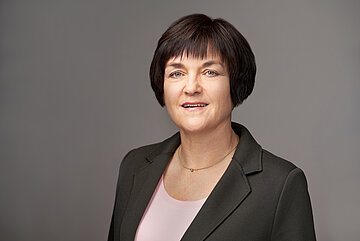How has the entire convenience sector changed in context of the new normal?
The food service market is undergoing strong structural changes in and after the pandemic. From the guest's perspective, the experience and socializing will become even more important when consuming in-house. However, given the plethora of different occasions for visits in the restaurant industry, it is difficult to generalize about what the "new normal" is. In the future, however, basic values such as trust and safety will be a basis for diners when visiting restaurants and will ensure easy access. In the pandemic, eating habits have also become more flexible. This includes take-away and delivery solutions that offer diners the rational enjoyment experience and more flexibility.
From the perspective of the restaurateur, the effort required for hygiene and the aggravation of the staffing situation is increasing even more due to external influences such as lockdowns. The enormous increase in guest expectations raises the bar for successful economic activity even higher.
The quality of the food and the gastronomic service will be still important factors for success, but at the same time the price will also play a stronger role. In the future, restaurateurs will have to be even more efficient and flexible to reconcile the different requirements of their guests. One key to a successful future for the restaurant trade will be both a high degree of convenience and time enhancing the gastronomic experience.
From the perspective of industry, trade and logistics, an enormously high degree of production and delivery flexibility must be ensured, which is demanded for restaurateur. This leads to increased costs (e.g., for warehousing) under more difficult general conditions (labor laws, hygiene requirements). A difficult balancing act for all involved.
What is "New Convenience"?
Convenience is a long-term trend in the food world. Due to their controlled processes, industrial processes can deliver maximum safety, equally high quality and transparency that can be controlled on a daily basis. With their technological advantages convenience products offer restaurateurs even more: costing security and flexibility at a time when short-term fluctuations in demand due to changes in opening rules are the order of the day and when the search for suitable skilled staff for the kitchen is often fruitless.
The decisive factor in correct use of convenience is to give the chef the chance to refine his dish individually and to concentrate on the essentials, his individual creativity and the experience for the guest. Convenience makes elaborate preparation steps safer and less expensive, and in catering kitchens, the right match between product and technology is then added to ensure that the optimum degree of preparation is achieved. With a dash of craftsmanship and creativity, the dish is perfectly balanced.
Frozen products are convenience products par excellence and have been on the road to success for years in the restaurant, hotel and communal catering sectors, as well as among consumers, as the rising sales figures show. Frozen products are available in a wide variety of convenience grades, from peeled vegetables to premium finger food for exclusive catering events, leaving hardly any gastronomic wishes unfulfilled. Chefs and caterers can find lots of exciting information about the benefits and use of frozen foods on TK-Pedia, the knowledge platform for professional users and the Instagram channel #COOLICIOUS of the German Frozen Food Institute.
Which food trends will also be important for the convenience sector in the future?
Food trends are diverse and changing rapidly. Vegetarian and vegan options are on the rise, and there is an increased demand for green food, especially in urban centers. Classics such as premium quality and regionality are perennial trends. They are strongly linked to current sustainability issues such as animal welfare and healthy eating, e.g. naturalness. Overall, our food is becoming more and more individualized, it is shaped by our attitudes towards life and also our desire for staging, which can be seen very nicely in the popularity of food photos. "I eat, therefore I am," you might say. This is also the bar for convenience products; they have to convince with a handcrafted, as well as homemade look. For the stress-ridden customer, "to-go" offerings are also becoming increasingly significant as a snack between meals. Here, there is a wide variety of ideas and options in the frozen assortment.
What do you expect from INTERNORGA 2022?
INTERNORGA was and is the "trendsetter" among the catering trade fairs. Especially in difficult times, the industry needs personal exchange and creative, new impulses and ideas in order to reposition its business for the future, to test innovative ideas and to learn about new solutions. The frozen food sector is well represented with many exciting exhibitors and innovations and is looking forward to the all-important INTERNORGA restart under "live" conditions. Gastronomy is a "people business", without personal exchange we cannot successfully shape the future. We are looking forward to see you again in Hamburg!

